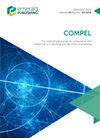A Generalized Current Balancing Control for Series-Capacitor Buck Converter with Interleaved Phase Angle
IF 1
4区 工程技术
Q4 COMPUTER SCIENCE, INTERDISCIPLINARY APPLICATIONS
Compel-The International Journal for Computation and Mathematics in Electrical and Electronic Engineering
Pub Date : 2023-06-25
DOI:10.1109/COMPEL52896.2023.10221016
引用次数: 0
Abstract
In addition to increasing the output current, an interleaved buck converter can significantly reduce the current ripple at the output. However, the bottleneck of the interleaved buck converter application is the unbalanced inductor current. In order to achieve the current balance in the entire section of the duty cycle, this paper proposes a control architecture with interleaved alignment, using the adjustment of the duty cycle and phase offset, to analyze and realize a high output current and current balanced in three-arm series capacitor interleaved buck converters (SCIBCs) in this work. By analyzing and modeling the SCIBC and using a single-loop control architecture that feedbacks the output voltage, the proposed current-balancing method balances all inductors’ current within the full duty cycle without any current sensor. In addition, the small-signal transfer function of the control signal to the output voltage and design of the controller parameters are derived according to the specification, and the SCIBC with the proposed current-balancing control with PI controller of the alignment of interleaved phase angle is constructed. The high output current and current-balancing characteristics of the proposed circuit control architecture are validated in the simulation tool SIMPLIS.交错相角串联电容降压变换器的广义电流平衡控制
除了增加输出电流外,交错降压变换器还可以显著降低输出端的电流纹波。然而,交错降压变换器应用的瓶颈是电感电流的不平衡。为了实现全段占空比的电流平衡,本文提出了一种交错对中控制架构,利用占空比和相位偏移的调节,分析并实现了三臂串联电容交错降压变换器的高输出电流和电流平衡。通过对SCIBC进行分析和建模,并采用反馈输出电压的单环控制架构,提出的电流平衡方法在不需要任何电流传感器的情况下,在整个占空比内平衡所有电感的电流。此外,根据规范推导了控制信号对输出电压的小信号传递函数和控制器参数的设计,并构造了具有交错相角对齐PI控制器的电流平衡控制的SCIBC。在仿真工具SIMPLIS中验证了所提出的电路控制结构的高输出电流和电流平衡特性。
本文章由计算机程序翻译,如有差异,请以英文原文为准。
求助全文
约1分钟内获得全文
求助全文
来源期刊

CiteScore
1.60
自引率
0.00%
发文量
124
审稿时长
4.2 months
期刊介绍:
COMPEL exists for the discussion and dissemination of computational and analytical methods in electrical and electronic engineering. The main emphasis of papers should be on methods and new techniques, or the application of existing techniques in a novel way. Whilst papers with immediate application to particular engineering problems are welcome, so too are papers that form a basis for further development in the area of study. A double-blind review process ensures the content''s validity and relevance.
 求助内容:
求助内容: 应助结果提醒方式:
应助结果提醒方式:


